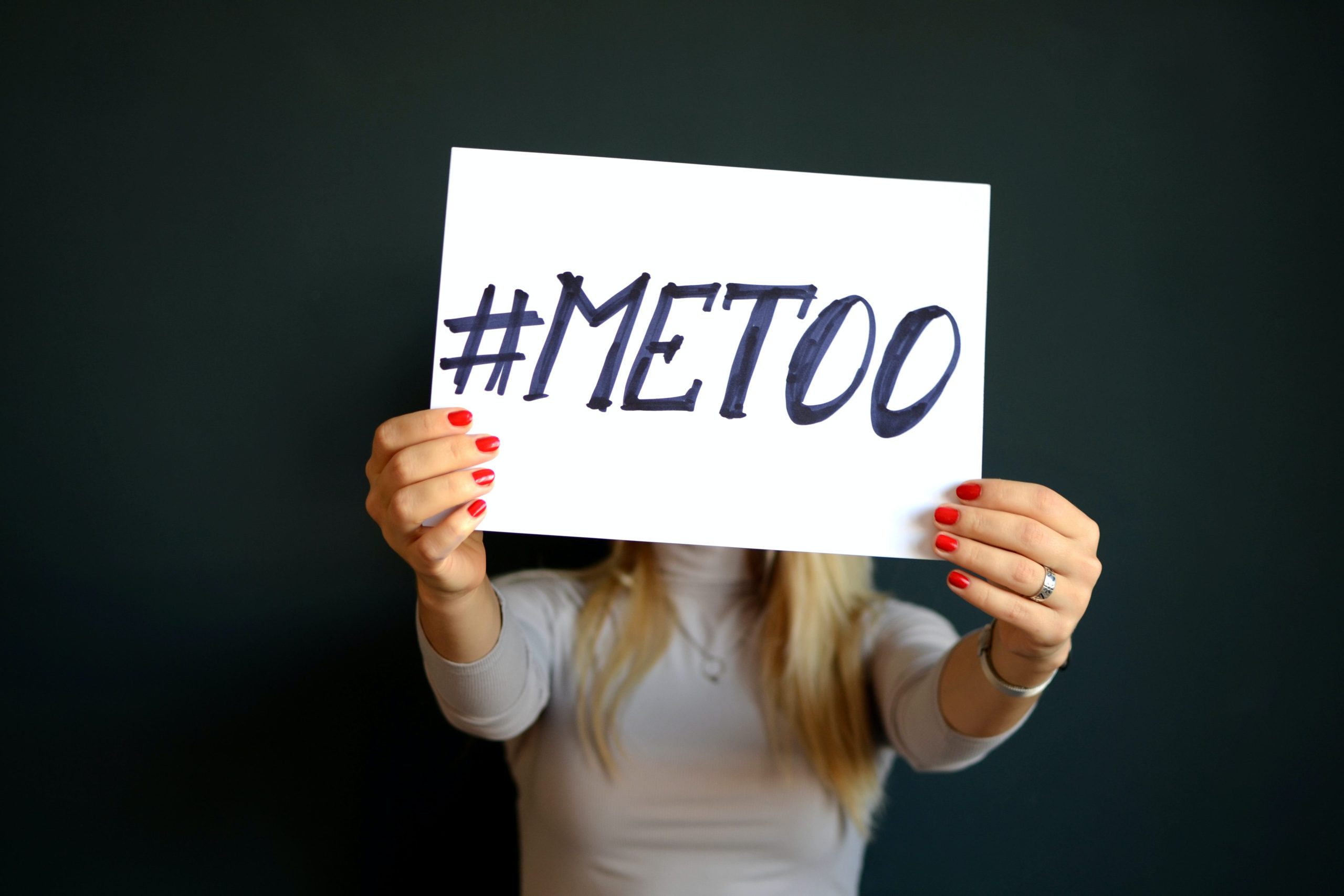What is Sexual Assault?
Sexual assault or sexual violence refers to any sexual activity where one party was unable or unwilling to offer consent. Sexual assault is a major public health crisis in the United States. This type of event has a life-long impact on victims’ health, opportunities, and well-being. Individuals of all genders, sexual orientations, ages, and demographics are impacted and any individual can experience or perpetrate sexual violence1.
Sexual Assault Awareness Month
April is Sexual Assault Awareness Month (SAAM). SAAM was established in 1984 as a way for advocates, survivors, and communities to come together to talk about sexual violence, as well as increasing knowledge and awareness, and identifying strategies and resources to prevent sexual violence2.
Sexual Assault Statistics
There are a wealth of resources out there to educate individuals on sexual assault. These resources educate individuals on how often sexual assault takes place, prevention tips, and related topics. These statistics and tips help us to spread awareness of the dangers of sexual assault. Resources also help us to recognize the impact assault has on survivors. In addition, these resources educate professionals who could come into contact with sexual assault victims.
- Every 98 seconds, an American is sexually assaulted
- Only an astounding 5/1000 perpetrators will end up in prison
- Most sexual assaults happen at or near the victim’s home, often by someone they know and trust
- Health care is 16^ higher for women who were sexually abused as children
- Rape is the most under-reported crime: 63% of sexual assaults are not reported3
Sexual Assault Facts
Rates of sexual violence occurrence
Sexual violence occurs at an unfathomable rate. One in four women in the United States has experienced rape or attempted rape at one point in their lives. Additionally, over half of women have experienced sexual violence involving physical contact of some kind during their lifetime. 1/26 men have experienced rape or attempted rape in their lifetime. With men, one in nine reports that they were made to penetrate someone during their lifetime. One in three women and one in nine men report they experienced sexual harassment in a public place4.
Sexual violence often starts early
An important thing to keep in mind is that sexual violence often starts early on in life. More than four out of five female rape survivors report that they first were raped before age 25. Almost half of these respondents report first being raped as a minor, before age 18. Additionally, nearly eight in ten male rape survivors report that they were made to penetrate someone before they were age 25. About four in ten reports being made to penetrate as a minor5.
Sexual violence is costly
In addition to the emotional toll that sexual violence places on a victim, the financial costs over a lifetime are astronomical. Recent estimates put the lifetime cost of rape at $122,461 per victim. This dollar number includes medical costs, lost productivity, criminal justice activities, and other costs that may be associated6.
Sexual violence disproportionately affects some groups
Women and racial and ethnic minority groups experience a higher burden of sexual violence than non-minority individuals. For example, while men overall have a lower rate of reported sexual violence than women, 47.2% of bisexual men and 40.2% of gay men report some form of sexual violence other than rape in their lifetime7.

Stopping Sexual Violence
One of the most important things to keep in mind is the ways that we all can help to stop sexual violence. By keeping these at the forefront of our minds, we can work together to change our society’s sexual violence crisis. It is imperative to remember that although very prevalent in society today, sexual assault and violence are preventable. Centers for Disease Control and Prevention says to use the STOP SV approach. These all involve organizations that specifically target different approaches that aim at ending intimate partner violence and sexual violence, as well as educating individuals on these topics from a young age.
(S) Promote Social Norms that protect against violence
(T) Teach Skills to Prevent Sexual Violence
(O) Provide Opportunities to Empower and Support Women and Girls
(P) Create ProtectiveEnvironments
(SV) Support Victims/Survivors to Lessen Harms
Promoting Social Norms, which protect against violence
- Utilize bystander approaches: Bystander approaches engage individuals to change social norms. These particularly engage people, oftentimes young people, with the purpose of promoting social norms that protect against violence. In addition, they promote peer leadership in regards to speaking up when they see behaviour that places others at risk, even involving safely intervening.
- Mobilize men/boys as allies: These approaches allow for the encouragement of men and boys to be allies in sexual violence prevention. These groups are taught how they can help to prevent violence, support victims, and learn positive norms regarding masculinity, gender, and violence, in hopes they can reiterate these to their own social environments8.
Teaching Skills to Prevent Sexual Violence
- Social-emotional learning: Social-emotional learning approaches proven to reduce peer violence and potentially prevent sexual violence. For example, Second Step: Student Success through Prevention is a program that teaches middle school students social-emotional skills. This program aims at reducing bullying and sexual violence down the line. Lessons are highly interactive and incorporate group work, classroom discussions, activities, exercises, and individual work. Results prove a reduction in SV perpetration by 39% and homophobic teasing victimization by 56%.
- Teaching healthy, safe dating and intimate relationship skills to adolescents: These approaches are oftentimes in practice within school settings. They focus on building the skills necessary to support healthy, safe relationships. Some of the teachings involve positive communication, anger management, and conflict resolution. These programs also focus on attitudes and behaviours that are in relation to dating abuse and violence. Education for adolescents on these topics proves to prevent dating and sexual violence among youth.
- Promoting healthy sexuality: Comprehensive sexual education programs prove to reduce high-risk sexual behaviour; which is a clear risk factor for SV victimization and perpetration. Whether sexual education is a part of regular discussion in your household or within these programs, promoting healthy sexuality rather than avoidance is imperative. An important way to make these changes in your community is by encouraging comprehensive programs in schools, as well as developing after-school programs for students who do not have a comprehensive program available to them.
- Empowerment-based training: Empowerment-based training gives individuals the tools that can assist them in recognizing danger and getting themselves out of a risky situation safely. A program called Enhanced Assess, Acknowledge, Act is a 12-hour victimization prevention program for college-aged women. This program provides education and skills training with the goal being to assess risk from acquaintances, overcome emotional barriers by recognizing danger, and use verbal and physical strategies to reduce the risk for violence9.
Provide Opportunities to Empower and Support Girls/Women
- Strengthening economic supports for women and families: There are laws in place that encourage equality amongst men and women, such as laws that require equal pay amongst men and women in the same position. These types of laws are present in most states. For areas that do not currently have these laws in place, individuals can work with local organizations to encourage these laws to be put into effect. You can also write letters to your political representatives to encourage the introduction of these types of legislation. One important mission with regard to strengthening support for women and families involves resources. Some of these resources include affordable child care and maternity/family leave for new and expecting parents. Whether this involves reaching out to those who can make a difference in these areas or utilizing organizations that provide assistance, this is an important factor in lessening sexual violence. For example, a woman who is in a marriage where she is in harm’s way may stay with this partner due to not having the resources necessary to support herself and her children. Working on improving the support available can prevent these situations from continuing.
- Strengthening leadership and opportunities for girls: Youth leadership programs with this standpoint aim at building up confidence and leadership skills among young women. These programs can impact a woman’s potential education, employment, and community engagement. A program worth mentioning in Seattle, Washington is called Powerful Voices. This program provides opportunities for young girls to develop leadership skills and addresses root issues of gender inequity through social justice. The hope behind programs like this is that school success and better skills with regards to jobs as adolescence will lead to a reduction in risk of poverty and low educational attainment; two major risk factors for sexual violence victimization10.
Create Protective Environments
- Improving safety and monitoring in schools: The goal of this objective is to modify the physical space of the school. The rationale behind this is to increase monitoring in areas students perceive as unsafe. Research shows that these changes can have a positive impact on dating violence and sexual harassment among students. These approaches monitor and modify physical and social attributes of the environment at school by looking at where students feel most vulnerable, identifying safe spaces and safe people for student support, and fostering an atmosphere of intolerance for violence and harassment.
- Establishing and consistently applying workplace policies: Workplace policies should be in place to address the risk of sexual harassment/violence and create a safe, healthy organizational climate. Policies that are impactful include a commitment from upper management, zero tolerance, notification to new hires of harassment-free environments, regular assessments of policies, and consistent, specific training on these sexual harassment-related policies in the workplace.
- Addressing community-level risks through environmental approaches: Community-level risk approaches address neighbourhood and community settings, as a way to decrease risks of sexual violence. These approaches aim at changing, enacting, and enforcing laws, regulations and policies, or by changing the physical environment, economic/social incentives/consequences for behavior. These approaches often have low costs to implement, while the potential for great impact on sexual assault outcomes11.
Support Victims/Survivors to Lessen Harms
- Victim-centered services: Services focused on victims include support groups, crisis intervention teams, medical and legal advocates, and access to resources in the community to improve outcomes for survivors, as well as decrease long-term health consequences. These services aim at fostering the unique needs found among victims and survivors. They also attempt to coordinate with local agencies and advocates for victims.
- Treatment for victims of SV: Treatment approaches include evidence-based psychological interventions conducted by licensed providers. Psychosocial interventions can assist with addressing depression, anxiety, and fear. They can also help with problems adjusting to school, work, or daily life. Finally, they address symptoms of distress associated with sexual violence.
- Treatment for at-risk children and families to prevent problem behaviour including sex offending: Many adolescents who are at greater risk for violence perpetration have been present during violent acts in their homes or communities. By utilizing therapeutic approaches to address the individual, family, or community associated with violence. These approaches also focus on strengthening the relationship between parent and child, as well as addressing stress and depression, potentially impacting the child’s risk for sexual violence perpetration12.
Sexual Assault Resources
National Sexual Assault Telephone Hotline
The National Sexual Assault Telephone Hotline is a telephone service. By using this service, you can connect with a professional trained in sexual assault in your area. Anyone can access this service by calling 800-656-HOPE(4673).
When you call the number above, you will connect with a Rape, Abuse, & Incest National Network (RAINN) affiliate organization. The area it connects you to is based on the first six digits of your phone number. For those who want a more accurate location for them, cell phone users can enter their ZIP code.
The goal of this hotline is to offer a range of FREE & CONFIDENTIAL services:
- Support from a trained staff member
- Assistance finding local health facilities trained in caring for sexual assault survivors
- Someone unbias and empathetic to talk with about what occurred
- Local resources to assist with the next steps for recovery and healing
- Referrals for long-term support and treatment
- Education on the laws in your area
- Basic information and answers to medical concerns and questions13.
Seeking Treatment
If you are looking for a therapist specializing in sexual harassment, our therapists through Online-Therapy.com provide Cognitive Behavioral Therapy (CBT)
We have a variety of therapists who would love to help you with mental health concerns. Our platform offers a complete online therapy toolbox for individuals and couples! Our site has multiple options, which involve time with a personal therapist who can support you throughout your journey. If this is something you have an interest in, we would love to hear from you.
References
Centers for Disease Control and Prevention. (2022). Violence Prevention: What is sexual violence? Retrieved from https://www.cdc.gov/violenceprevention/sexualviolence/fastfact.html
Family Violence Prevention and Services Act. (2023, April 11). Sexual Assault Awareness Month. Administration for Children & Families. Retrieved from https://www.acf.hhs.gov/ofvps/sexual-assault-awareness-month
Nevada Coalition to End Domestic and Sexual Violence. (2023). April is Sexual Assault Awareness Month. Retrieved from https://www.ncedsv.org/april-is-sexual-assault-awareness-month/
RAINN. (2023) About the National Sexual Assault Telephone Hotline. Retrieved from https://www.rainn.org/about-national-sexual-assault-telephone-hotline




Leave A Comment